 https://www.teamipro.com/wp-content/uploads/2025/04/IPRO-Blog2-April-2025.png
600
1152
Pat Anunciacion
https://www.teamipro.com/wp-content/uploads/2023/07/IPRO.png
Pat Anunciacion2025-04-25 10:00:272025-04-06 03:03:3210 Ways Virtual CIO Services Dallas Give Businesses the Competitive Edge
https://www.teamipro.com/wp-content/uploads/2025/04/IPRO-Blog2-April-2025.png
600
1152
Pat Anunciacion
https://www.teamipro.com/wp-content/uploads/2023/07/IPRO.png
Pat Anunciacion2025-04-25 10:00:272025-04-06 03:03:3210 Ways Virtual CIO Services Dallas Give Businesses the Competitive EdgeRevolutionizing Healthcare Collaboration with Unified Communications
The healthcare industry has always been at the forefront of embracing technology to improve patient care and outcomes. Yet, despite advancements, the sector continues to grapple with the limitations of traditional patient care collaboration methods, such as fragmented communication channels and time-consuming manual processes. This is where unified communications (UC) comes into play, offering a synergistic blend of voice, video, messaging, and file-sharing technologies. By unifying these various communication tools under one platform, UC enables healthcare professionals to collaborate more efficiently and effectively, leading to faster decision-making and improved patient care.
We will delve into the transformative role of UC in enhancing collaborative patient care. Beyond mere conference calls, we will uncover the potential of innovative tools, including MSP help desk solutions, which redefine connectivity and productivity in the healthcare sector. This shift towards integrated digital collaboration platforms is streamlining operations and setting new benchmarks for patient care quality. For healthcare leaders, CIOs, and CEOs, understanding and adopting unified communications could be the key to navigating the complexities of modern healthcare challenges while ensuring superior patient outcomes.
Understanding Unified Communications
UC refers to a set of technologies integrating various communication methods within a business. This integration allows individuals to send messages on one platform and receive the same communication on another. Critical components of UC include instant messaging (chat), presence – the ability to see whether a contact is free or busy, voice (including IP telephony), video conferencing, desktop sharing, and data sharing, including virtual whiteboards. In healthcare, UC can also encompass clinical alerts, electronic health records (EHR) access, and real-time health monitoring, providing a holistic communication framework critical for efficient patient care.
Beyond Conference Calls: Advanced Features of UC
UC extends far beyond traditional voice communication, incorporating advanced features that significantly enhance collaboration within the healthcare sector. Real-time messaging enables instant communication between doctors, nurses, and support staff, facilitating quick decision-making and responses to patient needs. File sharing within the UC platform allows for the immediate exchange of patient records, test results, and other critical documents, ensuring all team members have access to the latest information. Moreover, video conferencing brings a new dimension to patient care, enabling virtual consultations and multidisciplinary team meetings, which are especially beneficial in remote or rural areas lacking immediate access to specialized medical care.
Enhancing Patient Care through UC Integration
The integration of UC with other healthcare technologies, such as Electronic Health Records (EHRs) and telehealth platforms, creates a more cohesive and efficient healthcare system. This synergy allows healthcare professionals to access and share patient information seamlessly, leading to a more holistic approach to patient care. The ability to quickly consult patient histories, update records in real time, and conduct remote consultations enhances the overall quality of care provided.
The Role of MSPs in UC Implementation
Managed Service Providers (MSP) play a crucial role in the effective implementation and support of UC solutions in healthcare. MSP help desk solutions ensure that UC systems are reliable, secure, and efficient, addressing technical issues promptly to avoid disruptions in patient care. This support is essential for maintaining continuous communication channels, safeguarding patient data, and allowing healthcare professionals to concentrate on patient needs rather than technological challenges. Through the strategic use of UC and the supportive backbone of MSP services, healthcare organizations can achieve a higher standard of patient care and operational excellence.
The Business Benefits of Unified Communications
Cost Savings and Efficiency Improvements
Adopting UC in healthcare settings offers significant business benefits, impacting more than just patient care. One of the most notable impacts is cost savings. By streamlining communication and reducing the need for physical meetings and paper-based processes, healthcare facilities can significantly lower their operational costs. Additionally, UC contributes to improved operational efficiency. Simplified communication processes and integrated technologies reduce administrative burdens and allow healthcare professionals to focus more on patient care rather than on managing disparate systems.
Enhanced Patient Outcomes and Healthcare Collaboration
The adoption of UC leads to better patient outcomes as well. Enhanced communication and collaboration among healthcare teams result in faster diagnoses, more accurate treatments, and improved monitoring of patient progress. Furthermore, UC fosters a more connected and productive healthcare environment. By breaking down silos between departments and specialists, UC ensures that everyone involved in a patient’s care is informed and engaged, leading to more cohesive care plans and higher patient satisfaction rates. In this way, unified communications not only advance the capabilities of healthcare facilities but also contribute to a more integrated and patient-centric healthcare system.
Overcoming Challenges in Unified Communications Adoption
The journey towards integrating UC in healthcare comes with its set of challenges. One common obstacle is resistance to change, particularly from staff accustomed to traditional communication methods. There’s also the technical aspect, where the existing infrastructure may not support UC solutions, or there might be concerns about data security and patient privacy, especially under regulations like HIPAA. Additionally, UC systems’ initial cost and complexity can be daunting for many healthcare organizations.
To overcome these hurdles, healthcare leaders should adopt a strategic approach. This involves providing comprehensive training and support to ensure staff understand and embrace the new technology. Upgrading infrastructure, possibly in phases, to support UC solutions while ensuring robust security measures are in place to protect patient data is crucial. Partnering with experienced IT and UC providers can smooth the transition, offering expert guidance and support.
Adherence to healthcare regulations, notably HIPAA, is paramount when implementing UC solutions. Ensuring that all UC platforms comply with patient privacy laws and data security standards is non-negotiable. Healthcare organizations must work closely with UC providers to ensure all communication tools are secure, meet regulatory requirements, safeguard patient information, and maintain trust.
Toward a Unified Future in Healthcare Communication
UC offers significant potential to transform patient care through enhanced efficiency and collaboration. By improving real-time communication and promoting a unified approach, UC is setting new standards for healthcare outcomes and operational effectiveness. However, adopting UC faces obstacles such as staff resistance and regulatory hurdles. Yet, as healthcare evolves, integrating UC systems is essential for sustaining high-quality patient care and organizational productivity.
For healthcare leaders navigating the complexities of this digital transformation, collaboration with a seasoned IT partner like IPRO is crucial. IPRO offers the necessary expertise and support to seamlessly integrate UC solutions, ensuring they meet healthcare regulations and align with the organization’s goals. By partnering with IPRO, healthcare organizations can effectively address the hurdles associated with UC adoption and harness the full potential of these technologies. This strategic alliance promises to surmount adoption barriers and unlock new levels of patient care and operational excellence in the healthcare sector.
 https://www.teamipro.com/wp-content/uploads/2025/04/IPRO-Blog2-April-2025.png
600
1152
Pat Anunciacion
https://www.teamipro.com/wp-content/uploads/2023/07/IPRO.png
Pat Anunciacion2025-04-25 10:00:272025-04-06 03:03:3210 Ways Virtual CIO Services Dallas Give Businesses the Competitive Edge
https://www.teamipro.com/wp-content/uploads/2025/04/IPRO-Blog2-April-2025.png
600
1152
Pat Anunciacion
https://www.teamipro.com/wp-content/uploads/2023/07/IPRO.png
Pat Anunciacion2025-04-25 10:00:272025-04-06 03:03:3210 Ways Virtual CIO Services Dallas Give Businesses the Competitive Edge
How Network Security Benefits Everyone



